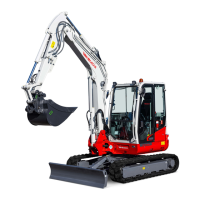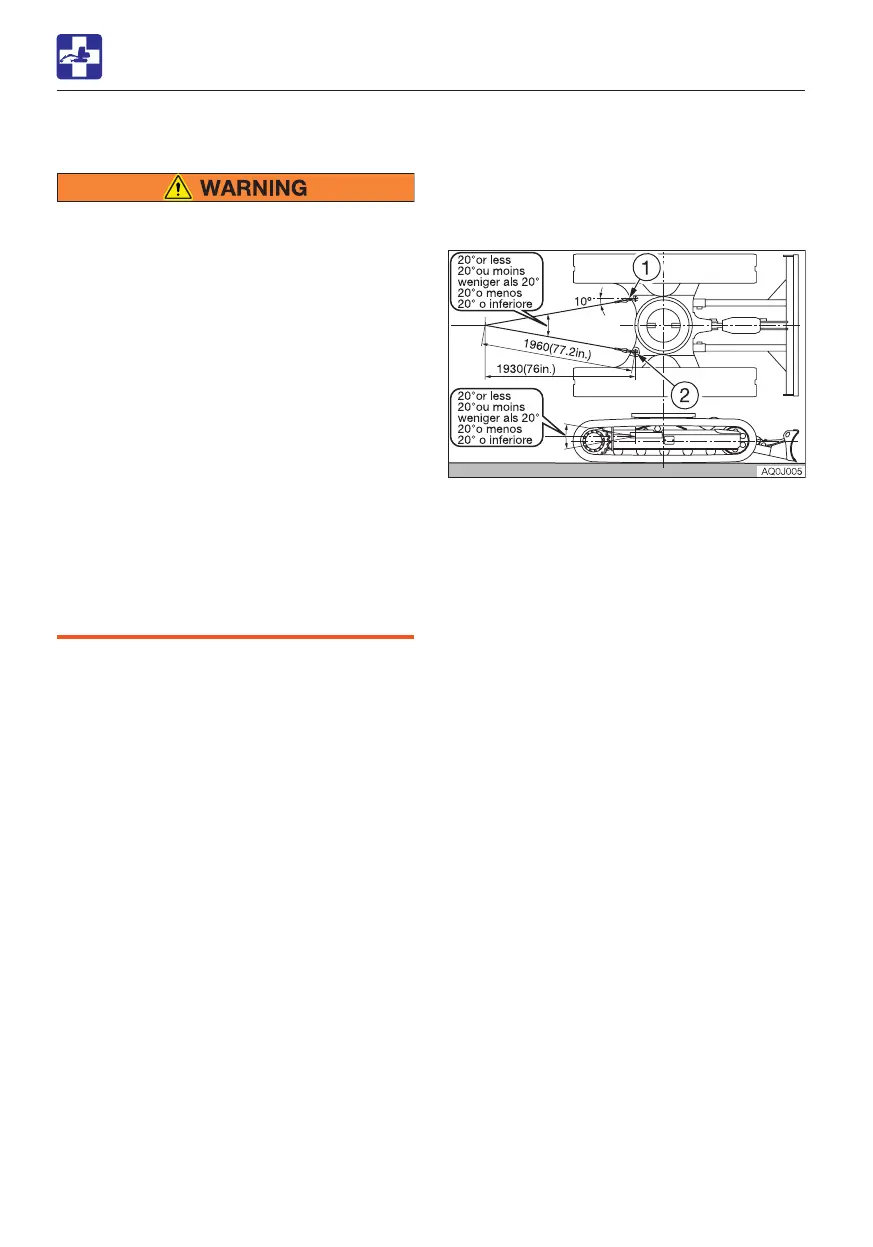6-26
TROUBLESHOOTING
TOWING
When towing, serious injury or death
could result, if performed incorrectly or
the wire rope being used is inappropriate
or not properly inspected.
• It becomes dangerous if the wire rope
breaks or becomes disengaged. Use a
wire rope appropriate for the required
tractive force.
• Do not use a wire rope that is kinked,
twisted or otherwise damaged.
• Do not apply heavy loads abruptly to
the wire rope.
• Wear safety gloves when handling the
wire rope.
• Make sure there is an operator on the
machine being towed as well as on the
machine that is towing.
• Never tow on slopes.
• Do not let anyone come near to the wire
rope while towing.
IMPORTANT: Do not tow a machine if its
engine does not start or if the machine
does not run. Doing so could damage the
machine being towed.
IMPORTANT: Be sure to follow the steps
below closely when using the towing hole
to tow. Failure to heed even one of the
steps may cause damage to the towing
hole or other parts of the frame.
TOWING
Towing the machine
Use the procedure described below to tow
heavy objects or the machine itself if it
should get stuck in the mud and not be able
to get out on its own.
• Permissible forces: 83.2 kN (18700 lbf)
Do not tow using only a towing hole on one
side.
1. Attach the wire rope to the shackle (1).
2. Fasten the shackle (1) to the towing holes
(2).
3. Make sure that the wire rope is at a cone
angle of 20° or less to the travel frame.
4. Move the machine to tension the wire
rope.
5. Operate the machine slowly and tow.

